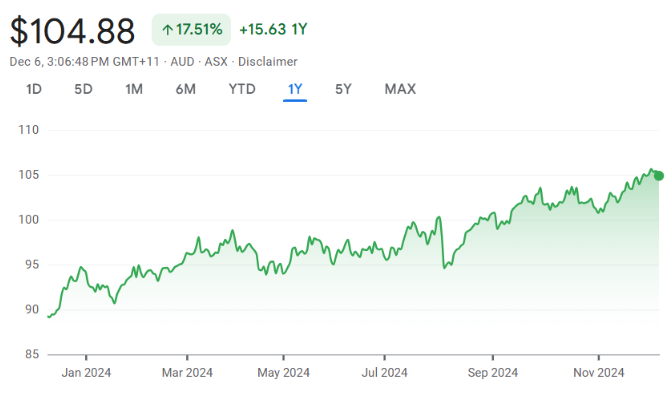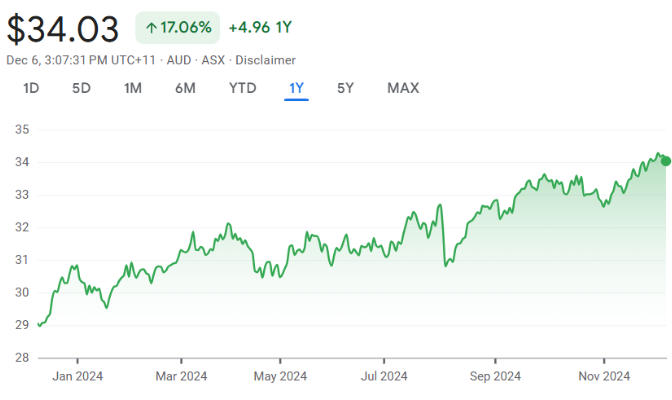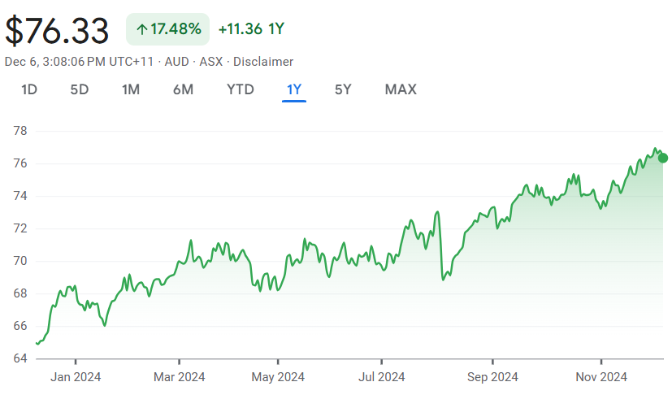What are Index Funds Australia?
Index funds are a type of investment fund available in Australia, designed to track a market index like the S&P/ASX 200. These funds follow a passively managed strategy, aiming to mirror the performance of a particular stock market index by holding the underlying assets in similar proportions. In contrast to actively managed funds, where fund managers buy and sell stocks to outperform the market, index funds track the market’s movements at a low cost.
Low-cost index funds are often preferred by investors seeking to diversify their portfolios without frequent trading. Most of the index funds available in Australia also offer investors different options for deploying their investment, such as Dividend Reinvestment Plans (DRPs) or regular investment plans, making them even more appealing to retail investors looking for long-term financial returns.
How Do Index Funds Work?
The function of index funds is to pool investments from individual investors and create a portfolio that mirrors the stock exchange. To provide context, index funds expose investors to various combinations of financial assets, minimising the risks associated with investing in individual stocks.
Index funds typically charge lower management fees than actively managed funds because they track a specific stock exchange benchmark. For most people, the benefit of investing in index funds is that they provide access to both Australian and international shares at a lower cost. Furthermore, certain funds in Australia are designed to invest in specific sectors, such as sector index funds, commodity index funds, and bond index funds.
Although most index funds have a relatively high minimum investment amount compared to other investment vehicles, their lower trading activity results in reduced capital gains tax and simplifies asset allocation.
Get the Latest Stock Market Insights for Free with
Stocks Down Under & Pitt Street Research
Join our newsletter and receive exclusive insights, market trends, investment tips, and updates delivered directly to your inbox. Don't miss out – subscribe today and make informed investment decisions.
Index funds vs Exchange-traded funds (ETFs)
Exchange-traded funds (ETFs) and index funds are two investment vehicles that are popular among investors, but there are several differences that you need to be aware of. Learning about how index funds work can help to understand their comparison to ETFs.
In Australia, index funds are mutual funds that passively track a stock market index (for example, the ASX 200). Index funds, however, do not try to beat the market, they follow an entire market or sector, as opposed to actively managed funds, which seek to outperform it. The fees for these investment funds are determined by the net asset value (NAV) at the end of the trading day. An exchange-traded fund (ETF), on the other hand, is traded on the Australian Securities Exchange (ASX) just like company stocks and investors can buy and sell shares during the trading day at market value. Similarly, as a relatively more liquid investment compared with unlisted managed funds that only process transactions based on the NAV.
The minimum investment is one key distinction. There are often increased minimum investments needed to purchase many index funds, making ETFs less of a burden for retail investors to buy in on. Low-cost index funds, like Vanguard index funds and other index funds, give you a diversified portfolio over Australian and international shares, emerging markets and targeted asset classes.
Both ETFs and index funds provide a low-cost way to invest financially in Australia. ETFs offer more flexibility because they're traded on the stock exchange in real-time, while index fund investing lends itself well to a long-term, passive investment approach. The distinction between the two, whether to invest in the entire market or market capitalisation or to carry out the same index strategy are the aspects that help in understanding so that one can build their investment portfolio accordingly.
3 Best Index Funds In Australia to Invest in 2025

Vanguard Australian Shares Index ETF (VAS)
The Vanguard Australian Shares Index ETF is a prominent vehicle for investors aiming to mirror the performance of the S&P/ASX 300 Index. This Exchange traded fund provides a comprehensive overview of the Australian market by investing in 300 of the largest publicly listed companies in Australia.

iShares Core S&P/ASX 200 ETF (IOZ)
Operated by BlackRock, one of the world's leading asset management firms, the iShares Core S&P/ASX 200 ETF targets the S&P/ASX 200 Index, capturing the performance of the top 200 companies by market capitalization on the ASX. IOZ is designed for investors seeking exposure to a more concentrated segment..

SPDR S&P/ASX 200 Fund (STW)
As one of the pioneering ETFs listed on the ASX, the SPDR S&P/ASX 200 Fund holds a special place in the Australian investment landscape. Managed by State Street Global Advisors, STW seeks to replicate the S&P/ASX 200 Index, encompassing the crème de la crème of the Australian corporate world...
3 Best Index Funds In Australia to Invest in 2025
Why Invest in Index Funds in 2025?
Index funds are an attractive investment option for several key reasons. They have some of the lowest management fees and expense ratios, charging significantly lower fees than actively managed funds. Diversification helps spread risk across numerous companies and sectors. These funds track market indices and provide stable, predictable returns in the long term. ETFs and index funds, such as VAS (Vanguard Australian Shares Index ETF), IOZ (iShares Core S&P/ASX 200 ETF), and STW (SPDR S&P/ASX 200 Fund), allow investors to easily trade on the ASX, simplifying portfolio management. Moreover, most index funds enable investors to reinvest dividends, contributing to reliable wealth-building over time.
Index funds are an excellent way to access financial markets with minimal risk. Before committing to any investment, investors should examine the product disclosure statement (PDS) to understand management fees, asset allocation, and investment goals. Consulting a financial adviser can help you develop a customised investment plan based on your financial objectives and risk tolerance.
Pros and Cons of Investing in Index Funds Australia
Index investing in Australia is one of the most popular strategies for retail investors looking to build a diversified portfolio at a low cost. Index funds follow a market index, like the ASX, and offer exposure to a broad spectrum of financial assets. While index fund investing has many advantages, it also comes with some limitations. Below are the pros and cons of investing in index funds in Australia.
Pros of Investing in Index Funds
One of the biggest benefits of this passive approach is its low cost. Unlike actively managed funds, index funds are passively managed, meaning the fund managers do not buy and sell individual stocks frequently. As stock portfolios are well-balanced and monitored by third parties, the management fees and management expense ratios (MER) are considerably lower in index funds, making them an attractive option for investors.
Cons of Investing in Index Funds
As index funds track a specific market index, their performance is directly linked to the overall stock market. When the stock index declines, the fund will show a corresponding loss. Index funds do not have the flexibility to make opportunistic adjustments like actively managed funds.
How to Invest in ASX Index Funds
Investing in ASX index funds is an effective yet simple way to gain diversified exposure to the Australian stock market and build your wealth over time. By sticking to index-tracking funds like those that mirror major indices, such as the S&P/ASX 200 or S&P/ASX 300, you can avoid individual stock risk while still earning steady returns.
To begin, you need to decide which funds to invest in. You might consider options such as VAS (Vanguard Australian Shares ETF), A200 (BetaShares Australia 200 ETF), or STW (SPDR S&P/ASX 200 ETF), depending on factors like expense ratios, dividend yields, and past performance. Then, open a brokerage account (e.g., CommSec, SelfWealth, or Pearler), deposit funds, and search for the ETF’s ticker symbol to invest. You can place a market order (buy at the current price) or a limit order (specify a price) to purchase the ETF units.
Long-term stock investments can yield substantial benefits from market growth and stability, and enrolling in a Dividend Reinvestment Plan (DRP) can help your returns grow even faster. It’s important to periodically check your portfolio, but frequent trading can minimise long-term gains. Be mindful of capital gains tax when selling shares and consider how franking credits may impact dividend income. Consult a tax advisor if necessary to optimise your investment strategy.
Are ASX Index Funds Right for You?
ASX index funds provide a cost-effective and passive investment option, making them suitable for investors seeking broad market exposure without the need for active management. They offer diversification across various sectors, which can help mitigate risks associated with individual stocks. However, if you prefer a more hands-on approach to managing your investments, actively managed funds might be more appropriate. In such cases, consulting a financial advisor can provide personalized guidance to align your investments with your financial goals and risk tolerance.
FAQs on Investing in Index Funds Australia
ASX index funds are a type of investment fund that tracks the performance of a specific market index on the Australian Securities Exchange (ASX). Share ETF, which gives investors exposure to a mix of Australian and overseas shares without having to buy individual stocks. Many index funds in Australia follow indices like the S&P/ASX 200.
Our Analysis on ASX Index Funds
Here are 6 ASX 200 stocks with low PE multiples – are they bargain buys?
Here are 6 ASX 200 stocks with low PE multiples Helia (ASX:HLA): 5.7x for FY25 Helia is a mortgage…
Top 3 AI Stocks to Invest in for Long-Term Growth
Artificial Intelligence is no longer a speculative technology of the future, it’s the defining driver of modern business. From predictive…
The Australian Federal Budget 2025: Which Sectors Will Win and Which Will Lose?
The 2025 Federal Budget has been released, sparking conversations across boardrooms, households, and political circles. Described as a “budget for…
Here’s what you need to know about dual class shares and why the ASX still bans them in 2025
If you want to invest in the world’s biggest tech companies, you need to know about Dual class shares. Even…
How to judge if a stock is undervalued? Here are 6 potentially useful ways
How to judge if a stock is undervalued? Here are 6 ways to tell! 1. If a stock is trading…





